#neo-pictorialism
Text
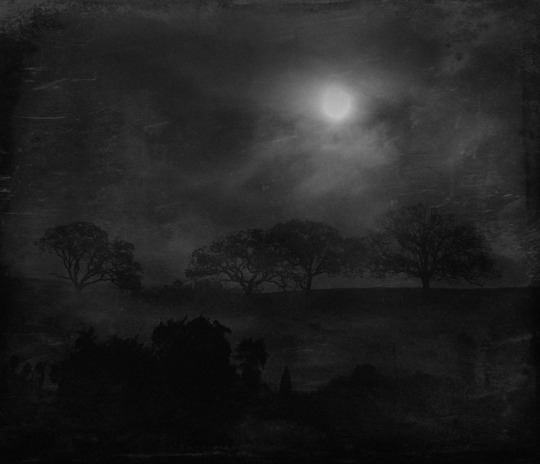
Jim Ferreira
#neo-pictorialism#jim_ferreira#contemporary_photography#tumblr_photographer#pictorial_landscape#nightscape#trees
360 notes
·
View notes
Text
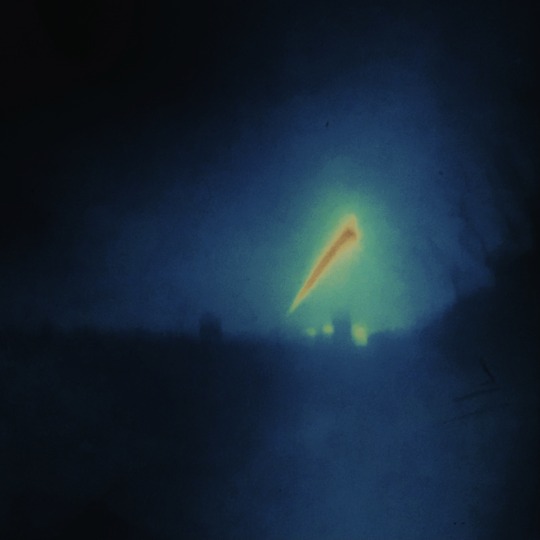
[•] veranismos de san juan _
27.6.23
#reverside#jolaver#photography#artists on tumblr#jorgeolaveriveros#fotografos en tumblr#fotografia#photographers on tumblr#jorge olave riveros#neo-pictorialism#contemporary photography#estenopeica#stenope#estenopo#pinhole photography#pinhole#solarigraph#solarigraphy#solarigrama#solarigrafia#sunprint#solargraph#valparaíso chile#valpo#valparaiso#fotografía#fotógrafos chilenos
1 note
·
View note
Photo

T.
March 30, 2023
#photographers on tumblr#Black and White#Noire et blanc#noiretblanc#lensblr#pictorialism#original photography#man#Homme#visual poetry#lensculture#lensbr#artistic#portrait#emotion#feeling#neo noir#noir et blanc
115 notes
·
View notes
Text

Spring showers, the coach
Alfred Stieglitz, 1899-1900
1 note
·
View note
Text
“As art historian Christopher Reed argues, ‘The Wilde trials seemed to reveal homosexuality as the secret behind the enigmatic passions of the Aesthetes, tainting the entire movement, all of its products, and even the idea of aesthetic sensitivity.’
Indeed, the modern identities of ‘the homosexual’ and ‘the artist’— both considered manifestations of innate predispositions—developed nearly simultaneously in the nineteenth century, as both creating art and committing sodomy moved from activities to ways of being. ‘Artistic’ quickly became euphemistic slang for ‘queer.’ Painter Paul Cadmus remembered how the association had transferred to the American scene by the 1930s. ‘They just said, ‘He’s an artist.’’ American psychiatrists, too described men suspected of homosexuality as ‘aesthetic in temperament.’ Thus when [Bob] Mizer [influential founder of the homoerotic Physique Pictorial magazine] adopted this language, praising [artist George] Quaintance for his ‘neo-aestheticism’ and imagining his audience as ‘the limited aesthetic group,’ he was signaling to and helping construct a distinct gay identity among his readers.”
David K. Johnson, Buying Gay: How Physique Entrepeneurs Sparked a Movement
11 notes
·
View notes
Text
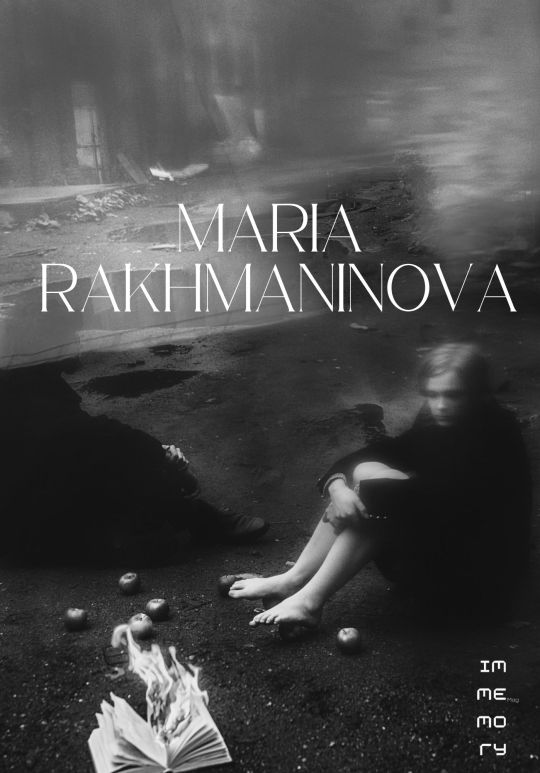




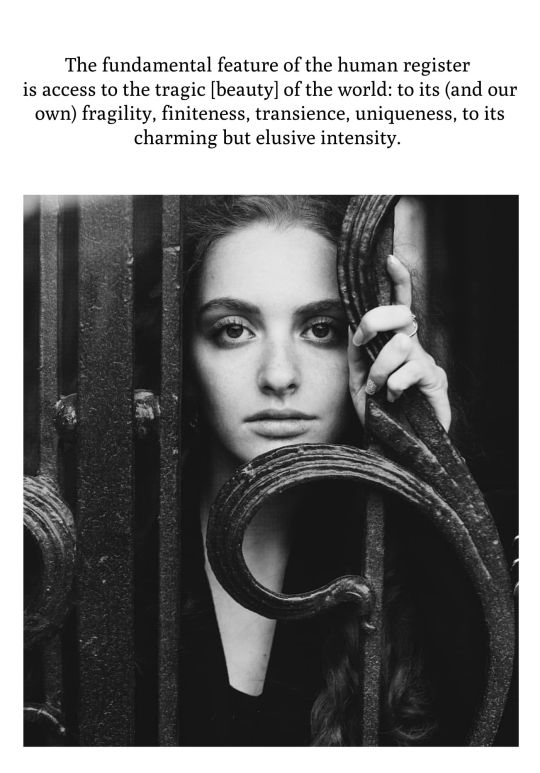

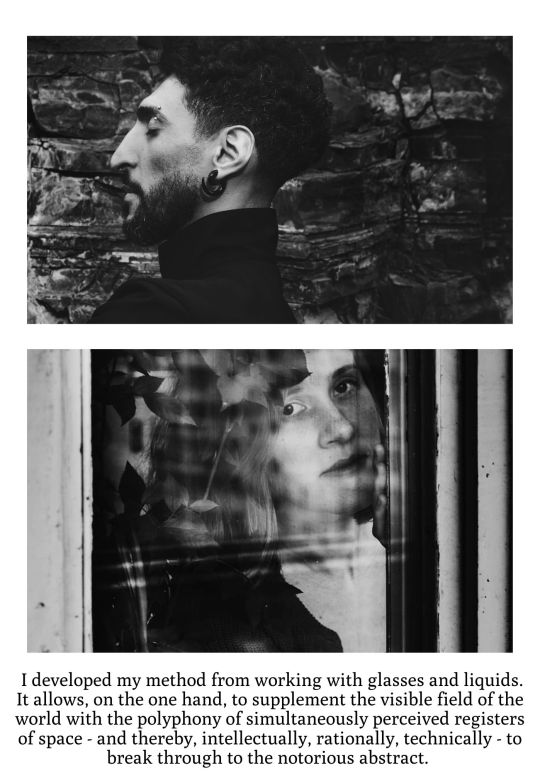
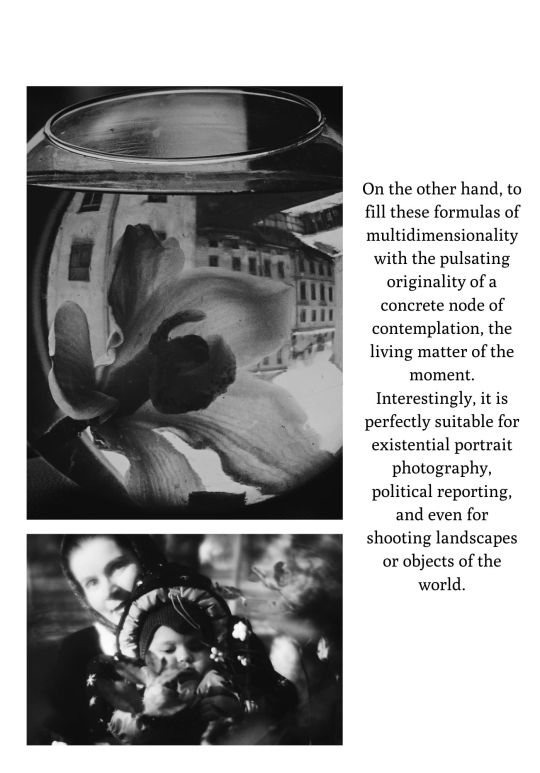

Maria Rakhmaninova, born in Moscow, lived and worked in St. Petersburg. By education, graphic artist, photographer, Doctor of Philosophy. Since the beginning of the war - political refugees.
I work in the tradition of neo-Romanticism, combining pictorialism with my own artistic pursuits. For me, Visual art and philosophy have always been closely intertwined and interconnected.
In my art, I always start from the fact that the visual can work as a portal, as a condition for access to the meanings and structures of our relations with the world, and they, in turn, can be given to us as text in visual languages.
The fundamental feature of the human register is access to the tragic [beauty] of the world: to its (and our own) fragility, finiteness, transience, uniqueness, to its charming but elusive intensity. Visual art is able to maintain this connection with it, which is lost in the ordinary view - a view focused not on being, but on possession (which, however, is not able to saturate due to its ghostly nature).
I developed my method from working with glasses and liquids. It allows, on the one hand, to supplement the visible field of the world with the polyphony of simultaneously perceived registers of space - and thereby, intellectually, rationally, technically - to break through to the notorious abstract. On the other hand, to fill these formulas of multidimensionality with the pulsating originality of a concrete node of contemplation, the living matter of the moment. Interestingly, it is perfectly suitable for existential portrait photography, political reporting, and even for shooting landscapes or objects of the world.
#photography#art collective#photomagazine#culture#art#bnwphotography#female photographers#support female artists
7 notes
·
View notes
Text
The tour and the solos
Some thoughts on the messy schedule of January-February of 2024 and lack of American leg for NCT Unity tour.
Foreword. I think we, fans, should get used to this order of things. SM gets more and more artists, more and more neos do solo activities. It becomes impossible to dedicate socmed for a period of time to only one unit or a member. It's not just solos. BA work, YT content announcement, magazine pictorials, etc. - these activities also need to be announced, and they break a sequence of promotional material of the member under the spotlight.
Ideally, an album should be announced a month prior to its release. Three weeks is the usual time for SM. Three weeks of pre-release promotional run+two weeks of music shows+a week or two for "tails" (fanmeets, bts yt content, some magazine articles). A month and a half. 4 units, 2 comebacks per year. 8x1.5=12. As you see, a smooth series of comebacks is possible in an ideal scenario and without solos. However, some units have 3 comebacks (+singles/Japanese releases). Some months are bad for comebacks (Olympics, holidays). I didn't include NCT/NCT U/DJJ/solos. Not to mention, members get sick, members get tied by obligations to third-parties (tv-series, BA appearences), and there are multiple possible reasons for delays in production of albums and MVs, multiple ways a "perfect" schedule can go awry.
That being said, a schedule for NCT still can be paced better than we had this winter. I would not like a repeat. I think it is the result of catching up with things (Ten's solo, it was postponed), priorities (Wish debut at SMtown), and Taeyong not having much time left (enlistment) with the need to continue with 127's Unity tour (Tokyo Dome, March 9-10). In addition, both Tae and Ten had BA appearence obligations at the time of their comebacks. Even if they don't take too long, they still affect scheduling of fanmeets and concerts.
─── ・ 。゚☆: *.☽ .* :☆゚. ───
If you browse X, you'll easily see fans believing SM is intentionally sabotaging NCT 127 and some neos (Taeyong and Ten). "SM can't let them become too popular". Such statements are close to a fan's heart, evoke immidiate emotional responce.
Where is the proof and argumentation though?
It is indeed not peachy inside SM right now. Kakao, Hybe are the new biggest shareholders. CEOs were changed. There were talks about the board consisting of only finance guys, and artists trying to fight back. Ongoing investigations of Kakao, SM and Align that helped to oust LSM. A constant mayhem. I don't even go there.
NCT is SM's current bread-winner (together with aespa). After LSM/Kakao/Hybe feudal war SM needs to show investors its 3.0 plan is working, that the company is profitable, it will have money to pay dividents, that despite foreign investors losing interest in k-pop companies and pulling out, and SM stock falling low because of investigations, SM is still a worthy company to trust its money to. Believe in it, and it will come out a winner, and stocks will rebound. Hence, SM needs good sales from NCT and all the members. SM needs money. The company is undergoing a big change and is buying companies in US and establishing new ones for music production&distribution, not to forget SM needs money for the new groups (they will take time with investment return).
Secondly, 127 neos are approaching contract renewal. It is not the time to dissapoint them and make them think of possibly parting ways. Yes, Taeyong now knows his worth and alludes to it in interviews. Who will bring money then? Dream? They have their renewals same year. Who says they won't decide to join their hyungs after witnessing a bad treatment of them?
Intentionally sabotaging the artists, making them regret being signed to the company, simply doesn't make sense in the current situation SM is in.
Taeil had a duet song with an indie artist once (whose company is an SM's sub-label). I consider the video for their song as the bottom of SM's lowered standarts. Nowadays covers get a better treatment.
Now, think of the quality of photoshoots and promotional videos Ten and Taeyong got. Clear concepts were developed, professionals were hired, everything was organised quickly, solutions were found (like wigs for Tae). Both were given a lot of say, their opinion listened to. Taeyong got to perform on music shows the song he likes the most (Moon tour) and the one (APE) he asked to be added to the album after A&R offered him their list. By the way, the quality of print of the latest albums is much better than Resonance.
Fans heard Taeyong used one of his jackets (the white puff one), and run with the story he styled all other outfits and did his own make-up, lol. Since when Taeyong is a make-up artist? As for Loewe, it's how it's done. Brands give clothes to idol companies to be used and advertised, it's benefitial for both parties. Jaehyun is constantly in Prada in recent 127 MVs.
Money on promotion should be spent wisely. Afterall, profit starts only after the expenses are covered. If some type of advertisement is costly but brings little exposure, is not effective, it shouldn't be implemented. It is better to spend those money on something else.
Beyonce can promote her album through one twit, and that will be enough, it is because she has the capital of her name. Fans tend to not realise this about idols. New groups need a lot of promotion to gain fans. For older artists their name does the work, they already have a fandom. K-pop is not for general public, it's a niche product. The 1,2 mln Spotify subscribers on Tae's channel will hear the new album without any special ad. Same applies to subscribers on other music platforms.
Despite Taeyong giving only two concerts in a small venue (Seoul has a problem with venues, this one is used by many k-pop idols), his concert was prepared better than Link. He flew in the air, there was a giant "T" letter, lightsticks were synchronised. Taeyong decided on the setlist himself, he was given full reign over it.
Whatever problems there are on the upper level with higher ups, the staff at NCT centre worked with intention to do right by the artists.
─── ・ 。゚☆: *.☽ .* :☆゚. ───
A lot of money was invested in American market. 127 spent a month there. It is not reasonable to just forget about it after the effort brought results. During Link tour 127 spent 2 weeks in NA and gave 8 shows. Meaning, even a short-lasting trip is enough. The more concerts (with the same setlist, props, choreos) a tour has, the more profit and return, afterall. Again, it is not reasonable to shorten it, when it is actually a well enough prepared concert.
So "Why"? I think it is a simple result of "squeze in" approach. Normally, Tae's 2nd album would be released later, but he wanted it before enlistment. If Taeyong enlists somewhere in late March-early April, then perhaps the US leg was sacrificed for his solo. MarkHyuk also need time to prepare for Dream activities, at least 2 weeks, I guess.
To be honest, the lack of NA concerts puzzles me. Japan is more profitable (domes) and more convenient (close), so it takes precedence. Still. Taeyong is the only culprit I can think off, lol.
2 notes
·
View notes
Note
my favorite thing abt the human centipede is that it can b abbreviated to THC. like WEED ! ! ! ! ! ! ! anyways can i ask a ww2 question how deep did nazis get into occult stuff ? i remember hearing abt them trying to do magic
IKR one time i got a thc ad and i was sitting there for fifteen minutes trying to dissect where the human centipede was before realising. Oh they're talking about The Weed. and YEUeuUS!!! !! i love discussing the history of the third reich
TL;DR of below: Himmler had strong neo-pagan beliefs that he incorporated into the SS through ritualistic ceremonies. He also sent teams across Europe in search of Thor's hammer and/or evidence regarding it because he believed it could be used as a weapon against the Allies. No, nothing came out of these expeditions. The spread of his occultist beliefs wasn't too successful because Himmler himself didn't think Germany was ready for such a shift into neo-paganism among other reasons
-------------------------
So Heinrich Himmler was the primary propagator of these occultist beliefs. He abandoned his Catholicism, finding its views on those he considered "subhuman" too merciful.
He sort of fused the ideas of pagan gods, pseudoscience, and Germanic myths into one religion he wanted the German race to follow. Thus began the neo-pagan doctrine established within the SS
There's a loooot to go over but Himmler believed in a Germanic god named Waralda, or The Ancient One. He organised ritualistic ceremonies for the SS, like solstice celebrations, SS weddings, and baby naming ceremonies. He sort of treated Mein Kampf like their holy book which is funny considering it's not even a well written piece of literature. Passages of the book were read during naming ceremonies and to open SS weddings
Himmler was also obsessed with Thor's hammer. Teams were sent across Europe in search of evidence and knowledge regarding it. He believed it was a war weapon, and that it could be used against the Allies. Here's his (translated, obviously) letter to the Ahnenberbe (a pseudoscientific organisation he was involved with) about the hammer:
“Have the following researched: Find all places in the northern Germanic Aryan cultural world where an understanding of the lightning bolt, the thunderbolt, Thor’s hammer, or the flying or thrown hammer exists, in addition to all the sculptures of the god depicted with a small hand axe emitting lightning. Please collect all of the pictorial, sculptural, written and mythological evidence of this. I am convinced that this is not based on natural thunder and lightning, but rather that it is an early, highly developed form of war weapon of our forefathers, which was only, of course, possessed by the Aesir, the gods, and that it implies an unheard of knowledge of electricity.”
The spread of Himmler's beliefs also didn't go very far because he himself didn't think that Germany was ready for a complete shift into neo-paganism
Also something pretty funny, Himmler recruited a man named Karl Maria Wiligut into the SS because he claimed to have access to knowledge of ancient Germanic tribes by going into a trance. Himmler was unaware he was schizophrenic
#answered#ricky ww2 talk#there is SO much more about this to talk about but ya#just some of what i know on it
2 notes
·
View notes
Text
3 Square Art - NOOBAA 23 | Non-Objective Abstract Art 5th Annual Exhibition

The theme of Non-Objective Abstract Art can refer to Non-Objective Art or Non-Representational Art, which does not seek to represent specific objects, people, or other subjects found in the natural world, but instead relies on shape, line, color and form with no particular subject. Non-Objective Art is a pure abstract style that typically uses geometric motifs on a shallow picture plane. Art that has no illusion of pictorial depth made by linear perspective in the image and is purposely devoid of any references to worldly things or object. Styles include pure abstraction, such as geometric abstraction, neo-plasticism (De Stijl), color field, lyrical abstraction, concrete art, and more but must be unrelated to objective reality. Juror: David Reif, Distinguished Professor Emeritus of Art at the University of Wyoming.
$700 in cash awards
DEADLINE: July 24, 2023
For more information: https://www.theartlist.com/3-square-art-noobaa-23-non-objective-abstract-art-5th-annual-exhibition
#art#art call#art exhibition#Non-Objective Abstract Art#NOOBAA 23#3 Square Art#Non-Objective Abstract Art 5th Annual Exhibition#TheArtList#Call to Artists#abstract art
0 notes
Photo
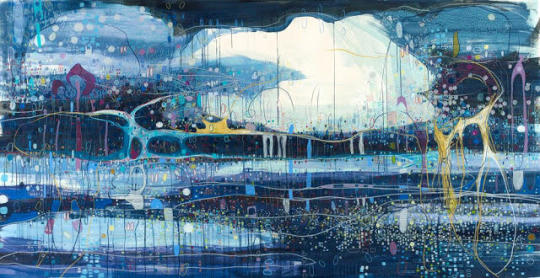
Representation Matters
How do we express ourselves through art? We express ourselves through art depending on our perspective and understanding on what art we’ll do. We can express art through different forms like dancing, painting, singing, acting, and even venting or ranting to release emotions. One main factor as to how we express ourselves is by letting our emotions and feelings take over.
We always express an artwork metaphorically. Different ways of expressing ourselves like representation, exemplification, and metaphor depending on what we want to convey to the audience is important. And by that, every artwork represents something. Every person has their own interpretation and we are all allowed to have our own interpretation just like the artist.
One theory that I learned and caught my attention for pictorial representation was the Neo-naturalist Theory of Pictorial Representation. In this theory, it implies that photos ought to be viewed as unique and vivid encounters that imitate our regular impression of the world. Pointing out that a picture's meaning is determined by the context in which it is shown and how the viewer interprets it. When interpreting images, it emphasizes the necessity of taking into account the perceptual and cognitive processes of the viewer and the significance of context in comprehending their meaning.
As someone who was a part of the performing artists, non-pictorial representation theories were the most interesting part for me in the discussion. Lexical Non-Pictorial Representation was the one that also caught my attention because I was a part of a choir and this representation refers to the ideas, concepts, and things using words and language rather than images or pictures. This type of representation is central to human language and thought and essential for communication. As a flexible and adaptable means of expressing concepts and ideas, it is essential to human communication and thought. Language is an essential tool for conveying meaning and comprehending the world around us due to its precision and complexity, despite its limitations.
0 notes
Text
Walter Leblanc
Walter Leblanc (1932 – 1986) is an important Belgian figure of European post-war art. Over the years, he has built an extremely coherent oeuvre staging light without artifice or any disrupting elements. Within the international, neo- avant-garde network of the Nouvelle Tendance, ZERO, op art, kinetic art, concrete art and (neo)constructivism, Leblanc gained both national and international recognition.
Jan Hoet described Walter Leblanc as “an artist who deserves a place in the international pantheon of art".
After graduating from The Royal Academy of Fine Arts in Antwerp, Leblanc became a founding member of the Antwerp avant-garde group G58. The exhibition ‘Anti-Peinture ‘(1962), which he curated at G58-Hessenhuis, served as his manifesto. After a figurative, abstract and subsequent monochrome period, Leblanc put the paint away for good. In 1959 he began to introduce the ‘torsion’ as an important pictorial element in his work. These torsions – made from cotton threads, plastic or metal – allowed him to bring motion, light and vibration into his reliefs and sculptures.
Leblanc actively participated in ground-breaking international exhibitions such as Monochrome Malerei (1960, Leverkusen), The Responsive Eye (1965, MoMA, New York) and Serielle Formationen (1967, Frankfurt am Main). In 1964 he won the prestigious Young Belgian Art Prize and in 1970 he took part in the 35th Venice Biennale. From 1977 until his early death in 1986, Leblanc was teaching at the Instituut voor Architectuur en Stedenbouwkunde (NHIBS) in Antwerp.
His work is part of many important museum and private art collections worldwide, such as Centre Pompidou (Paris), Tate Modern (London), Museum Kunst Palast (Düsseldorf,) Josef Albers Museum (Bottrop), Stedelijk Museum (Amsterdam), S.M.A.K. (Ghent), Mu.Zee (Ostend) and The Fine Arts Museums (Brussels).

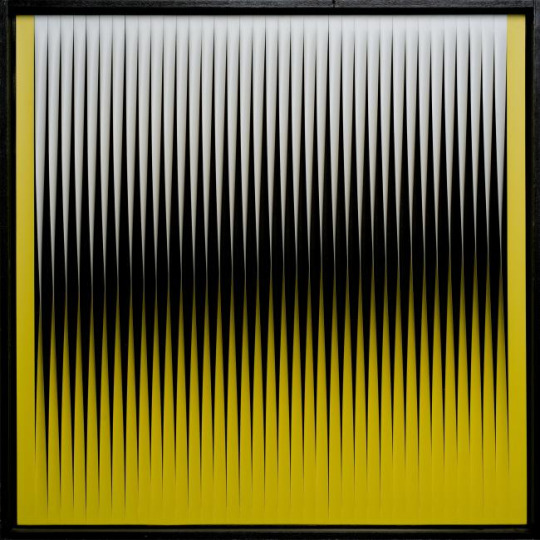
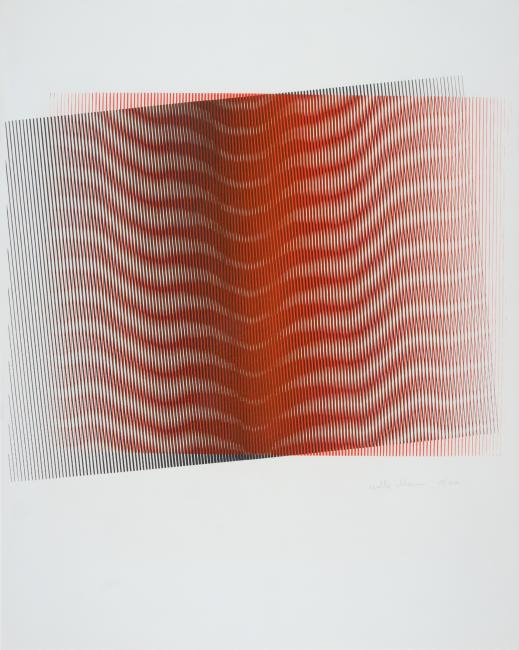
0 notes
Text

Two Trees Jim Ferreira
221 notes
·
View notes
Text
0 notes
Text
0p civilization beyond earth wallpapers

Gwion Gwion rock paintings found in the north-west Kimberley region of Western Australia c. They may be the result of a basic need of expression that is innate to human beings, or they could have been for the transmission of practical information. Prehistoric artists may have painted animals to "catch" their soul or spirit in order to hunt them more easily or the paintings may represent an animistic vision and homage to surrounding nature. Various conjectures have been made as to the meaning these paintings had to the people that made them. There are examples of cave paintings all over the world-in Indonesia, France, India, Spain, Southern Africa, China, Australia etc. And more recently, in 2021, cave art of a pig found in an Indonesian island, and dated to over 45,500 years, has been reported. The finding was noted to be "the oldest pictorial record of storytelling and the earliest figurative artwork in the world". In December 2019, however, figurative cave paintings depicting pig hunting in the Maros-Pangkep karst in Sulawesi were estimated to be even older, at least 43,900 years old. In November 2018, scientists reported the discovery of the then-oldest known figurative art painting, over 40,000 (perhaps as old as 52,000) years old, of an unknown animal, in the cave of Lubang Jeriji Saléh on the Indonesian island of Borneo ( Kalimantan). The oldest type of cave paintings are hand stencils and simple geometric shapes the oldest undisputed examples of figurative cave paintings are somewhat younger, close to 35,000 years old. The oldest known paintings are approximately 40,000 years old, found in both the Franco-Cantabrian region in western Europe, and in the caves in the district of Maros ( Sulawesi, Indonesia). Pettakere Cave are more than 44,000 years old, Maros, South Sulawesi, Indonesia 3.6.17 Contemporary painting into the 21st century.3.6.15 Hard-edge painting, minimalism, postminimalism, monochrome painting.3.6.14 Washington Color School, Shaped Canvas, Abstract Illusionism, Lyrical Abstraction.3.6.13 New abstraction from the 1950s through the 1980s.3.6.12 Art brut, New Realism, Bay Area Figurative Movement, neo-Dada, photorealism.3.6.11 Figurative, landscape, still-Life, seascape, and Realism.3.6 20th-century modern and contemporary.3.5 19th century: Neo-classicism, History painting, Romanticism, Impressionism, Post-Impressionism, Symbolism.The 19th century saw the rise of the commercial art gallery, which provided patronage in the 20th century. Finally in the West the idea of " art for art's sake" began to find expression in the work of the Romantic painters like Francisco de Goya, John Constable, and J. Beginning with the Baroque era artists received private commissions from a more educated and prosperous middle class. From the Modern era, the Middle Ages through the Renaissance painters worked for the church and a wealthy aristocracy. Initially serving utilitarian purpose, followed by imperial, private, civic, and religious patronage, Eastern and Western painting later found audiences in the aristocracy and the middle class. African art, Jewish art, Islamic art, Indonesian art, Indian art, Chinese art, and Japanese art each had significant influence on Western art, and vice versa. Until the early 20th century it relied primarily on representational, religious and classical motifs, after which time more purely abstract and conceptual approaches gained favor.ĭevelopments in Eastern painting historically parallel those in Western painting, in general, a few centuries earlier. Across cultures, continents, and millennia, the history of painting consists of an ongoing river of creativity that continues into the 21st century. It represents a continuous, though periodically disrupted, tradition from Antiquity. The history of painting reaches back in time to artifacts and artwork created by pre-historic artists, and spans all cultures.

0 notes
Photo

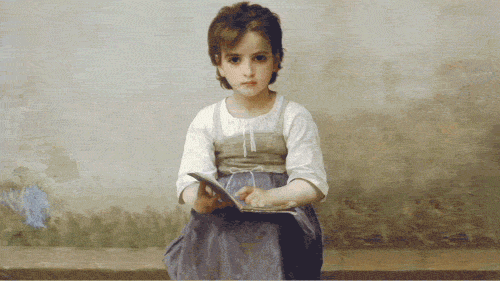



B E A U T Y 2014 by Rino Stefano Tagliafierro
The human body in modern and neo-classical art comes to life in an ethereal and iconic tale
BEAUTY is a short tale on the emotions of life: from birth to death, love and sex, pain and fear. A tribute to the classic pictorial tradition and its intriguing beauty, in a series of images of traditional paintings, from the Renaissance to late 19th century Symbolism, including Manierism, Landscape Art, Romanticism and Neo-Classicism.
The beauty is translated into the expressive force of a gesture extrapolated from the stillness of the painting, animating a feeling and removing it from its museum-like fixity, which now comes back to life thanks to the flames of digital invention.
youtube
Rino Stefano Tagliafierro
Milano MI, Italia
Director and video artist.
Over the years he has had experience as art director, visual-artist to realize video-art, short films, ADV, videoprojections and videoinstallations for exhibitions, museums and special events.
In 2013 he cofounded KARMACHINA, a studio of visual design based in Milan.
He has taken part in several contemporary art exhibitions in New York, Paris, Sapporo, Moscow, Berlin, Milan receiving international awards in many festivals.
contact: [email protected]
Official Website - https://www.rinostefanotagliafierro.com/
News
OFFICIAL WEB SITE
ART PAGE
KARMACHINA
BEAUTY
PEEP SHOW
https://www.karmachina.it/en/portfolio/b-e-a-u-t-y/
ATTENTION
We are sorry to inform you that, owing to the regulations of a series of important international festivals in which B E A U T Y will take part, for a certain period of time the video will not be available in its complete version.
0 notes
Text
Guston in Time: Remembering Philip Guston by Ross Feld
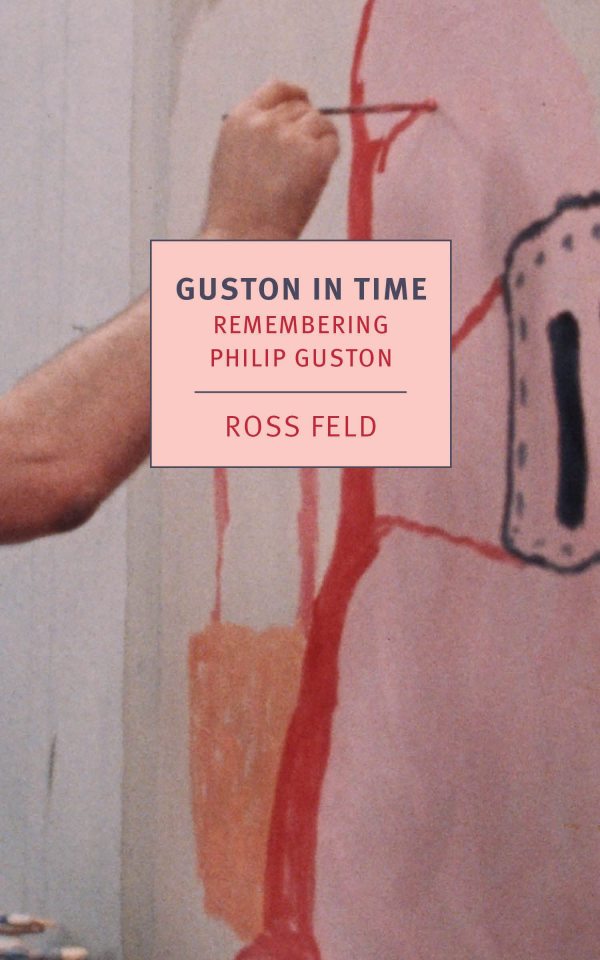
To steer one's life—in art—without being too much of a victim—not to feel too much ashamed is I think our common, I mean the given—problem? Who, in his right mind, would not want to give it all up altogether—but of course we are not in our right minds but 'besides ourselves.' And, above all we truly are not in control. So, the choices we make in order to put at least a temporary end to the torture of vacillations that finally can kill. And so, there is the treadmill. An exact, noble, yet grinding symbol . . . . (Guston letter, p. 13)
***
Certainly most of the fifties and early sixties abstractions Guston painted are seductively beautiful, no question. Camouflage invariably is artful, aiming as it does for a subtlety that has to be greater than disclosure's. The pictures have an aggregating pulse: mirrored forms, supporting and extending and clumping forms, all redolent of strain and sincerity. De Kooning energizes us with the pictorial curiosity of his abstractions, but Guston sits us down centrally to view the worrying work of moving color and form around.
No camouflage is perfect, though. Even in those classic fifties paintings there remained stubborn hints and shreds of representation as well as personal psychology: a green hood shape here, tendrils that might have been legs, a form suggesting a recoiling head. Was Guston really happy to paint this way? Probably yes and no. Certainly he believed that dilemma and unhappiness were the very subject matters of the paintings; and there always was a kind of flexible lean in Guston's abstractions—a leaning-back from the recognizable; and later, in the early mid-sixties pictures, a leaning forward into ash pits of depression, big black blocks of it.
But to lean is not the same as to move. The abstractions are meltingly all of a piece, eventually becoming larger and baggier and softer-edged but still very much held in check. Only when Guston finally was freely broken-out from visual orthodoxies (including his own) did images fall out of him that truly seemed to succeed and incorporate each other; that allegorized, redefined and separated each other. What was a central pulse gave way to images sliding into motion. (pp. 80-81)
***
As it so happens, Guston arose—and then escaped—from the heart of one of the most deeply Protestant art-histories ever seen: the Abstract Expressionists. The New York painters made external Works that testified to inner Faith, the gestural not aimed outward but urging a painting to go back down beneath its paint, to mean no more than its deepest soul. Abstract Expressionism sought purity with a certain portion of Puritanism. Painters like Rothko or Newman and Still, with their neo-sublimes, recapitulated Plato and Rousseau in finding that, as Barish says, "truth lies not in concrete particulars nor in what possesses the accent and the beat of life, but in the silent, invisible essences that underlie it." For Puritanism shares with Romanticism (Barish again): "a belief in absolute sincerity which speaks directly from the soul, a pure expressiveness that knows nothing of the presence of others. It takes as its models the guiltless folk of the earth, who 'know not seems': the peasant, the savage, the idiot, the child—those in whom the histrionic impulse remains undeveloped."
Guston on the other hand constitutionally mistrusted all essences. Nor would he be denied a single instance of "the accent and the beat of life." And his histrionic impulse, once he let it out, developed quickly. But to do so, he had to work directly against his New York School habits. He had to make himself stubbornly inauthentic.
This in itself has led to its own confusions in placing Guston's challenge, for there is a single prevailing mode of artistic inauthenticity in our time: the Duchampian/ironic school. The first baffled reception to Guston's painting found shelter there, the art world calling Guston a neo-Pop artist or cartoonist. This he never was. Duchamp, and the Pop artists, and the pastiche-ists like Rauschenberg and Johns all reveled in sorting-out the accepted into patterns of unacceptability: distortion, cool shock tonic high-spirits. They were after effect as well as élan. But Guston tacked toward celebrating the crap of life not for its own ironic sake but as the ever-present still life that surrounds the embarrassingly, even tragically human. No Duchampian object ever is tragic. Many if not most of Guston's objects, even the most hilarious, are. (pp. 92-94)
***
ABOUT your new work—and when is it "finished"—oh-oh—that is the real and only question. Of course you are absurdly right—the work says "let me be, I'm only a painting or a book—let me live a little." ALONE—WITHOUT YOU. But is it that I think I am through (I may be only exhausted) and go to bed and 4 A.M. (when you awake) cannot sleep—clothes back on—looking at the picture—scrape it out—take big house-painters brushes, smush it all up and feel relief. Start again—what a relief to face nothing—recently in this state, some other kind (I wish I knew) of seeing takes place—the ravaging hunger to see something I haven't seen before takes over. It must be appeased. Ross, if age has given me something, it may be, (I think) a small electronic time box—built in—won't allow me to rest, until something—anything—a scribble is put down before I think it out first. Oh, how I hate composing! Ross, I don't think I am a painter—at all! I am, I think, a medieval alchemist in a frenzy. (Guston letter, pp. 101-02)
0 notes